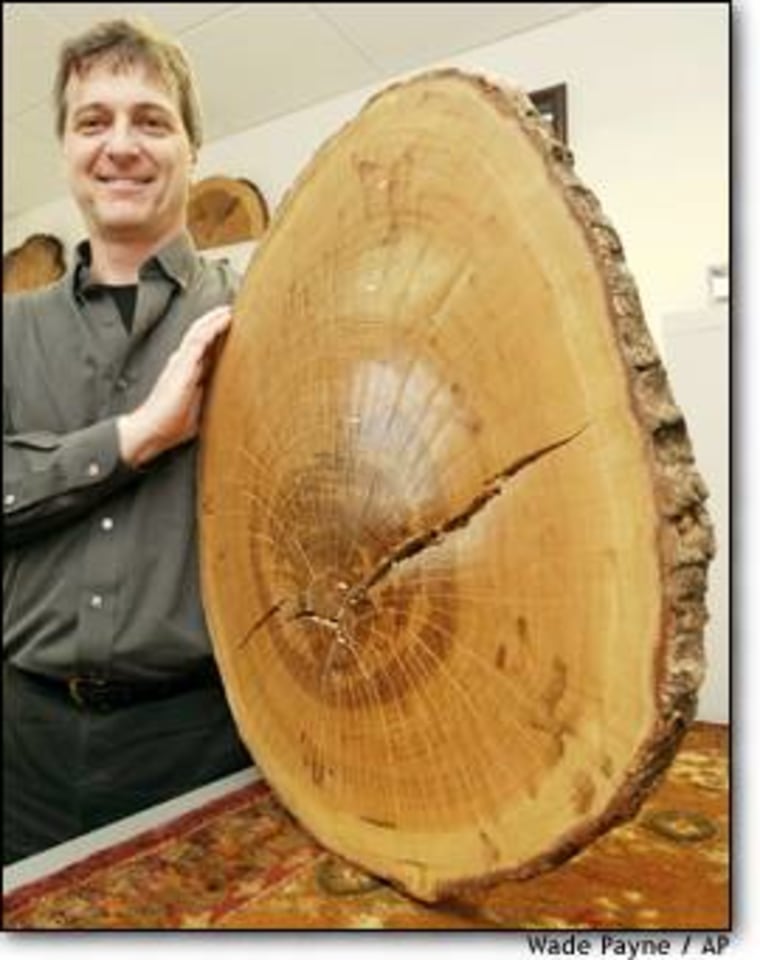The secret of a Stradivarius violin’s heavenly sound may actually have celestial origins.
For centuries, experts have debated whether special varnishes or wood treatments were the secret to the instruments’ rich resonance, which some consider superior to contemporary violins.
Now a tree-ring dating expert at the University of Tennessee and a climatologist at Columbia University offer a new theory — the wood developed special acoustic properties as it was growing because of an extended period of long winters and cool summers.
“It just amazed me that no one had thought of this before,” said Henri Grissino-Mayer. “The relationship between the violins, the trees that they were made from, the climate that existed when the trees grew and how it affected wood density to create a superior tonal quality.
“It just started clicking, and I thought, ‘Oh, we are on to something,’” he said.
‘Little ice age'
Grissino-Mayer at Tennessee and Lloyd Burckle at Columbia suggest a “Little Ice Age” that gripped Europe from the mid-1400s until the mid-1800s slowed tree growth and yielded uncommonly dense Alpine spruce for Antonio Stradivari and other famous 17th-century Italian violinmakers.
The ice age reached its coldest point during a 70-year period from 1645 to 1715 known as the Maunder Minimum, which was named after the 19th-century solar astronomer, E.W. Maunder, who documented a lack of solar activity during the period.
Stradivari was born a year before the Maunder Minimum began, and he produced his most prized and valued stringed instruments as the period ended — his “golden period” from 1700 to 1720.
Burckle, who studies global climate change through the lives of tiny sea creatures at Columbia’s Lamont-Doherty Earth Observatory in Palisades, N.Y., compared the dates and wondered if there was a connection.
He contacted Grissino-Mayer, a dendrochronologist at Tennessee’s Laboratory of Tree-Ring Science, who two years ago authenticated the world’s most venerated Stradivarius violin, known as “The Messiah,” in England.
Grissino-Mayer developed a 500-year chronology, from 1500 to the present, for 16 high-elevation forests of larch, spruce and pine in five countries from western France to southern Germany. He discovered an unprecedented period of slow growth from 1625 to 1720 characterized by compact, narrow tree rings.
“We would suggest that the narrow tree rings that identify the Maunder Minimum in Europe played a role in the enhanced sound quality of instruments produced by the Cremona (Italy) violinmakers,” Grissino-Mayer and Burckle write, noting that “narrow tree rings would not only strengthen the violin but would increase the wood’s density.”
“The onset of the Maunder Minimum at a time when the skills of the Cremonese violinmakers reached their zenith perhaps made the difference in the violin’s tone and brilliance,” they conclude.
Published in little-known journal
Grissino-Mayer and Burckle published their findings in the obscure scientific journal Dendrochronologia in July. Their conclusions are only now beginning to circulate.
“I think it is very, very interesting, and it seems to me a valid observation,” said Helen Hayes, president of the New York-based Violin Society of America, which hired Grissino-Mayer to examine “The Messiah.”
“But on the other hand, nobody in this field ... would ever say that if you put the best wood in the world in the hands of a mediocre maker that you would get a good instrument,” she said. “So it is never a complete explanation. Nor is the varnish nor any of the other things they have talked about. I would dare say there is no one piece of the puzzle.”
